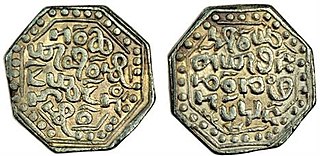
Bihu is a set of three important cultural festivals unique to the Indian state of Assam – 'Rongali' or 'Bohag Bihu' observed in April, 'Kongali' or 'Kati Bihu' observed in October or November, and 'Bhogali' or 'Magh Bihu' observed in January. The festivals present an admixture of Tibeto-Barman, Austroasiatic and Indo-Aryan traditions entwined so intricately that it is impossible to separate them—festivals which are uniquely Assamese to which all communities of Assam had contributed elements. The Rongali Bihu is the most important of the three, celebrating spring festival. The Bhogali Bihu or the Magh Bihu is a harvest festival, with community feasts. The Kongali Bihu or the Kati Bihu is the sombre, thrifty one reflecting a season of short supplies and is an animistic festival.

Buranjis are a class of historical chronicles and manuscripts associated with the Ahom kingdom written initially in Ahom Language and later in Assamese language as well. The Buranjis are an example of historical literature which is rare in India. They bear resemblance to Southeast Asian traditions of historical literature. The Buranjis are generally found in manuscript form, though a number of these manuscripts have been compiled and published, especially in the Assamese language.

Dibrugarh district (Pron:ˌdɪbru:ˈgor:) is an district in the state of Assam in India. The district headquarters are located within the city of Dibrugarh.

Suhungmung, or Dihingia Roja I was one of the most prominent Ahom Kings who ruled at the cusp of Assam's medieval history. His reign broke from the early Ahom rule and established a multi-ethnic polity in his kingdom. Under him the Ahom Kingdom expanded greatly for the first time since Sukaphaa, at the cost of the Chutia and the Dimasa kingdoms. He also successfully defended his kingdom against Muslim invasions, first by a general called Bar Ujjir and another by Turbak Khan. During his time, the Khen dynasty collapsed and the Koch dynasty ascended in the Kamata kingdom. His general, Ton-kham, pursued the Muslims up to the Karatoya river, the western boundary of the erstwhile Kamarupa Kingdom, the farthest west an Ahom military force had ventured in its entire six hundred years of rule.

The Ahom kingdom was a late medieval kingdom in the Brahmaputra Valley that retained its independence for nearly 600 years despite encountering Mughal expansion in Northeast India. Established by Sukaphaa, a Tai prince from Mong Mao, it began as a mong in the upper reaches of the Brahmaputra based on wet rice agriculture. It expanded suddenly under Suhungmung in the 16th century and became multi-ethnic in character, casting a profound effect on the political and social life of the entire Brahmaputra valley. The kingdom became weaker with the rise of the Moamoria rebellion, and subsequently fell to repeated Burmese invasions of Assam. With the defeat of the Burmese after the First Anglo-Burmese War and the Treaty of Yandabo in 1826, control of the kingdom passed into East India Company hands.

Bodo–Kacharis is a name used by anthropologist and linguists to define a collection of ethnic groups living predominantly in the Northeast Indian states of Assam, Tripura, and Meghalaya. These peoples are speakers of either Bodo–Garo languages or Assamese. Some Tibeto-Burman speakers who live closely in and around the Brahmaputra valley, such as the Mising people and Karbi people, are not considered Bodo–Kachari. Many of these peoples have formed early states in the late Medieval era of Indian history and came under varying degrees of Sanskritisation.

Barua is a common Assamese surname. This term is different and not to be confused with the surname used by Buddhists from Bangladesh, Myanmar and Tripura, who also use Barua as surname.
The Paik system was a type of corvee labour system on which the economy of the Ahom kingdom of medieval Assam depended. In this system, adult and able males, called paiks were obligated to render service to the state and form its militia in return for a piece of land for cultivation owned by the kingdom—believed to be a legacy the Ahoms brought with them from South-Eastern Asia in 1228. But it wasn't the Ahom kingdom alone that used a corvee system like this in Northeast India—Kingdom of Manipur and in a simpler form Jaintia kingdom and the Kachari kingdom too used similar systems that had tribal origins. The mature structure was designed by Momai Tamuli Borbarua in 1608, and extensively and exhaustively implemented by 1658 during the reign of Sutamla Jayadhwaj Singha. The system continued to evolve over time to meet the needs of the Ahom state and in time began to accumulate contradictions. By the end of the Moamoria rebellion (1769–1805) the Paik system had collapsed.
Borpatragohain was the third of the three great Gohains (counsellors) in the Ahom kingdom. This position was created by Suhungmung Dihingia Raja in the year 1527 when Konsheng was made the first Borpatrogohain. The designation was borrowed from Vrihat-patra, the Habung dependent of the Chutiya king.

The culture of Assam is traditionally a hybrid one, developed due to cultural assimilation of different ethno-cultural groups under various political-economic systems in different periods of its history.
Though the precise Etymology of Assam, a state in India is unclear—there is general agreement that it is related to the Ahom people. Whatever the source of the English name, Assam is itself an anglicization.

Jaapi or Japi (Bodo:Khofri) is a traditional conical hat from Assam, India similar to other Asian conical hats is made from tightly woven bamboo and/or cane and tokou paat a large, palm leaf. The word jaapi derives from jaap meaning a bundle of tokou leaves. In the past, plain jaapi were used by ordinary people in Assam and by farmers for protection from the sun, while ornate jaapi were worn as a status symbol by royalty and nobility. Decorative sorudoi jaapi are made with intricate cloth designs that are integrated into the weaving.

The Chutia Kingdom was a late medieval state that developed around Sadiya in present Assam and adjoining areas in Arunachal Pradesh. It extended over almost the entire region of present districts of Lakhimpur, Dhemaji, Tinsukia, and some parts of Dibrugarh in Assam, as well as the plains and foothills of Arunachal Pradesh. The kingdom fell around the year 1524 to the Ahom Kingdom after a series of conflicts and the capital area ruled by the Chutia rulers became the administrative domain of the office of Sadia Khowa Gohain of the Ahom kingdom.
Saikia was a Paik officer of the Ahom militia who led a hundred paiks. The Koch kingdom had a similar system in place. As it was a purely administrative position, the title holder could belong to diverse ethnic groups or religions. Today, this title is used as a surname by Assamese people of various ethnic origins. The post of Saikia in the Paik system was higher in rank to the Bora but lower in rank to the Hazarika.

Sunyatphaa also Udayaditya Singha was the king of Ahom Kingdom from 1670 CE to 1672 CE. After his elder brother Swargadeo Chakradhwaj Singha died in the middle of Ahom-Mughal war, Udayaditya Singha succeeded to the throne. His reign witnessed the end of Ahom-Mughal war, which started during the reign of Chakradhwaj Singha, when the Mughal army led by Rajput prince, Ram Singh I of Amber, was decisively defeated by the Ahom forces led by Ahom commander Lachit Borphukan in the Battle of Saraighat. The later part of his reign was characterized by the failure of military expedition against the Dafala tribes and the influence of Paramananda Sannyasi, a saintly figure from Brindaban, over Udayaditya Singha. Udayaditya's over exerted devotion towards Paramananda Sanyasi, aroused dissatisfaction among the nobles, which ultimately caused his deposition and execution. His reign was followed by a series of political anarchy and internal disturbances in the Ahom kingdom which continued till the accession of Gadadhar Singha in 1681 CE.

The Chutia people are an ethnic group that are native to Assam and historically associated with the Chutia kingdom. However, after the kingdom was absorbed into the Ahom kingdom in 1523–24, the Chutia population was widely displaced and dispersed in other parts of Upper Assam as well as Central Assam. They constitute one of the core groups that form the Assamese people.
Bora, also spelled Borah or Barah, is an Assamese surname used commonly throughout Assam.

Ahomisation was an assimilation process in the former Ahom kingdom of Assam by which the people from different ethnic groups in the region became a part of what is now considered as the Ahom population.

Sonowal is a designation of the gold-washers of Assam. They were previously addressed as Xunia thakur.











